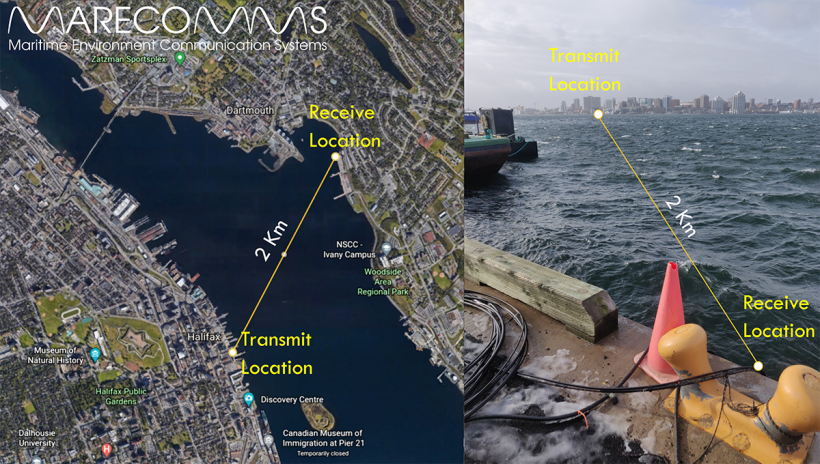Dartmouth-based bluetech company Marecomms is launching the commercialization phase of its evolution now that it has demonstrated its underwater communications system can work over two kilometres in shallow water.
Last Thursday, the company demonstrated that its Robust Acoustic Modem, or ROAM, could send sonar images and photos through a two-kilometre channel in the busy waters of Halifax Harbour. This modem uses sound waves to transmit and receive images, videos, or other data wirelessly under the water at far greater distances than can be achieved with current methods, the company said.
“It’s actually a very important part of our beta test,” said Founder and CEO Ulaş Güntürkün in an interview at the Centre for Ocean Ventures and Entrepreneurship the day before the tests. “What we have achieved already shows we can send data over distances three orders of magnitude over what’s available off the shelf. This test will improve on that.”
By three orders of magnitude, he was asked, did he mean three times better?
“No,” he said, with slight surprise. “One-thousand times.”
For about four years, Güntürkün has been working on the product to transmit data, including images, over distances underwater. It could have practical applications, for instance, in communicating between autonomous underwater vehicles and humans in a ship or onshore. The three-member team has been working with Marecomms’ corporate partner, Dartmouth-based Geospectrum Technologies to develop ROAM, and last year the company entered the MassChallenge accelerator in Boston.
The test last week was important because it demonstrated that ROAM could be used in difficult conditions over a long distance. Halifax Harbour is a poor location for such a transmission because there are a lot of factors that could distort the soundwaves over their journey.
There’s a lot of shipping traffic, and noise from the city. The water is shallow (never more than 20 metres), which means sound waves can bounce off the harbour floor. And it was windy in the harbour.
ROAM could be effective over greater distances, like about 10 kilometres, in the open ocean because there are fewer such disturbances, said Güntürkün.
The tests marked the end of beta tests for the company and it is now ready to begin selling the product.
“We have received a lot of interest from naval defence contractors in the U.S. and the U.K., and we have made it a priority to acquire at least one or multiple pilots with these companies,” said Güntürkün.
Marecomms built up some of these relationships during its time with MassChallenge, and he said the company’s relationship with Geospectrum will help both in developing sales and in manufacturing at scale.
Marecomms has not raised equity funding in its four-year history, though it has received several rounds of non-dilutive funding from such groups as Innovacorp and the Ocean Startup Project. Güntürkün was unable to say whether a raise is in the offing as it would depend on several factors.










